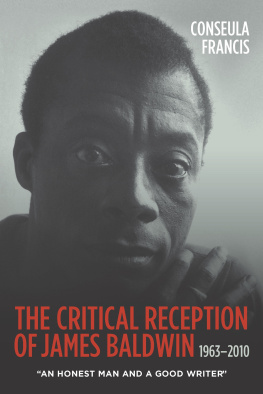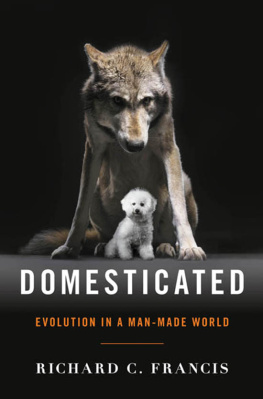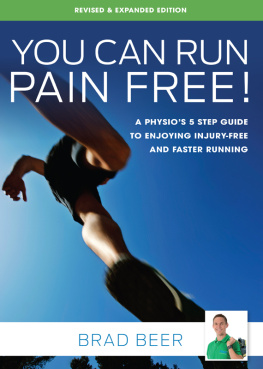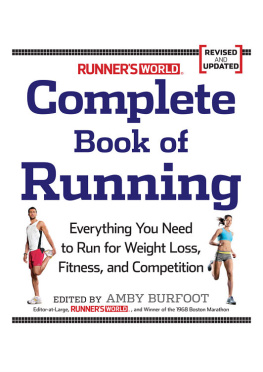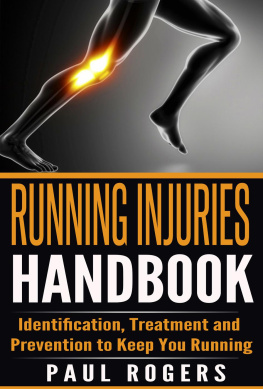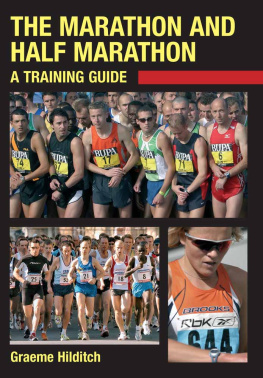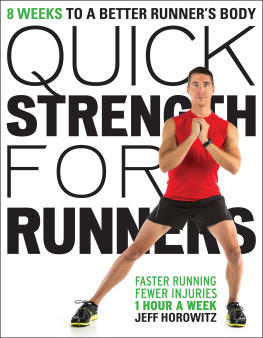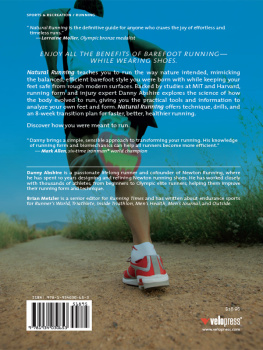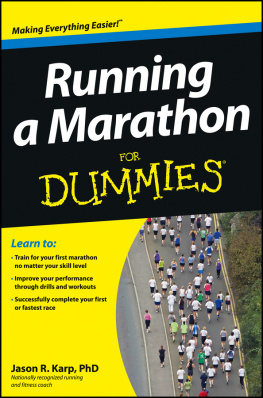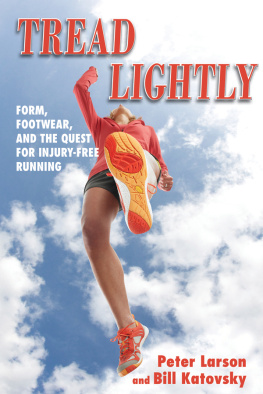RUNNING FROM INJURY
Why runners get injured
And how to stop it
PETER FRANCIS
GOAT Books
Praise for Running from Injury
[insert your praise here]
RUNNING FROM INJURY
Copyright 2021 by Peter Francis
All rights reserved. No part of this book may be reproduced or used in any form by any means graphic, electronic, or mechanical without the prior written permission of the publisher, except by a reviewer, who may use brief excerpts in a review.
Edited by
Cathal Dennehy
Cover & illustrations by
Dominika Stoppa
Media and marketing by
Aisling Golden & Megan Finlay
Dedication
For Runners Everywhere
- Dont give up
Foreword
This book is about dealing with the greatest heartache any runner can experience, injury. You will gain knowledge and training methods that will help you to manage current injuries and avoid future injury. After all, every athlete wants to be able to train free from injury and achieve a consistency that allows them to improve.
The knowledge imparted in this book is presented in the form of an adventure. Peter, an everyday dedicated runner, was pursuing his dream of trying to be the best he could be. He set attainable goals and dedicated himself to fitting his life around his training. But like so many athletes, his dream was shattered time and time again by injury of one type or another. By the time Peter was pursuing his PhD in sports science, he still harbored hope of achieving his running dreams. He stepped back and took a real hard look at his running and all the associated injury problems. At first, he made a modest plan to improve the situation in the hope that it would allow him to achieve some form of consistency. The more consistent he became, the more the buzz and joy of running returned to him and the more his performances improved. In the end, Peter achieved far more than he could have dreamt of as an athlete but more importantly, he retired on his own terms and not because of injury. He still runs for fun now.
As a reader, you will receive insight into the disappointment associated with shattered dreams; but you will also receive a roadmap out of the despair associated with injury. This roadmap is in the form of an alternate training method that enables athletes to train consistently. These methods are not the conventional methods used by many long-distance runners. Great detail is given in relation to how and why these methods proved effective.
There is nothing magical about 100-120 miles per week of running. And although high-volume running methods suited me in my own running career, I found out as a coach they are not suited to many runners. I have since used many of these methods to coach runners of all levels. Athletes, of all levels, are always looking for ways to improve via new training methods. To me, the definition of education is an open mind. Read this book, you will enjoy it and come away more educated.
Gerry
About the author of the foreword: Gerry Deegan was a world cross country silver medallist as part of the Irish team. He was Peters first running coach at the age of 15 and they went onto to become lifelong friends. They still walk, talk, and share ideas every week.
Contents
Section 1
Why do runners get injured
1.Too much of a good thing
I took my first step as a runner in the autumn of 2002 at the age of 15. I wore my soccer gear and a pair of flat, thin-soled Umbro shoes that would be considered fashionable trainers rather than running shoes. The first training week I would record in a diary was in September of the following year. It was a week comprising of 37-miles with a note after Sundays 7-mile run to say absolutely in bits after. By December of that year, I had hit 60 miles in a week and by January 2004, two months before my 17 th birthday, I ran 70-miles in a week. By this point, I had shed my soccer gear and traded in my fashion shoes for a pair of high-performance running shoes that were highly cushioned and had structured arch support. I managed to run 70-miles in a week again in February, August, October, and I once hit 77-miles in November. During the year I ran personal bests over 1500m, 3000m, 5 miles, 10km and I managed a top-20 finish in the national cross country. Barely a year old as a runner, I had made rapid progress in a short time. But two weeks after my 77-mile week, I developed flu-like symptoms which began a series of viruses and infections that lingered for several months. Injury would follow my return from illness and try as I might, I would never run 70-miles in a week again. I would not run a personal best until some 12-years later. In essence, November 2004 was the beginning of a journey that would eventually lead to this book.
Too Much of a Good Thing
Many of todays chronic diseases are thought to be contributed to by recent and rapid changes in our physical and nutritional environment. Type 2 diabetes, once considered a rare disease confined to adults, is now rife in adults and has begun to emerge in children in the last 20 to 30 years. There are no known archaeological records of brittle bone disease (osteoporosis) in our ancestors but now it is one of the major causes of fractures. Type 2 diabetes is contributed to by high energy availability combined with low levels of physical activity and osteoporosis is contributed to by insufficient stress to bones pre and post skeletal development and insufficient high-quality nutrients. 3,4
These diseases are described as mismatch diseases. To better understand a mismatch disease, we need to take a look at human history. The human body evolved slowly over the course of millions of years to be adept at hunting and gathering. In this context, farming may be considered a very recent development at about ~10,000 years ago. Farming allowed humans to settle due to an ability to stabilise and increase food supply. The physical activity required to farm remained similar to that of our hunter gatherer ancestors. The industrial revolution which occurred a little more than 200 years ago facilitated mass production of energy-dense and sometimes nutrient-deficient food at a fraction of the human labour cost. Since then, and with the assistance of technology, our daily lives have become increasingly sedentary and our food increasingly processed. Viewed in this context, time frames we might consider large are actually minuscule in terms of the evolution of the human body. It is not hard to see how our modern lifestyles are a shock to the human body and how mismatch diseases develop. Of course, access to a sustainable food supply and the elimination of excessive and potentially dangerous labour are a triumph of our time, but it is clear that too much of a good thing is bad for us.
A running injury occurs when there is a mismatch between the loading applied and the physical preparedness (also influenced by psychological readiness, see chapter 7) of your musculoskeletal system. Many coaches and runners are sometimes surprised when I suggest that injury, very simply, occurs due to a training error. The most common running injuries occur due to gradual overload. Although it is difficult to be specific, this process usually takes somewhere between a week and up to a few months. We are largely unaware that an injury is developing until we first experience pain. For example, the total running mileage of club runners in one month is not linked to running injury in the same month, but is significantly associated with the number of days injured the following month. There are similarities with our modern mismatch diseases in that respect. It takes years of poor lifestyle in order to receive a diagnosis of diabetes. Although the disease process of diabetes is on-going, we are unaware until we develop symptoms.



